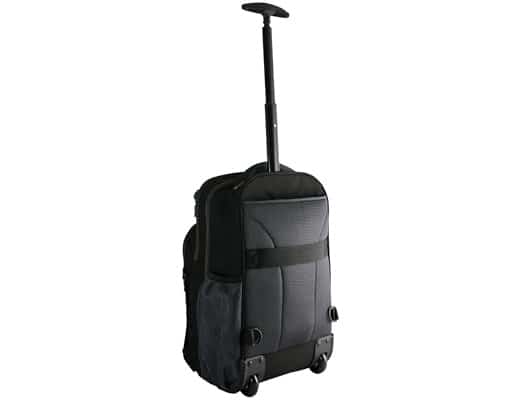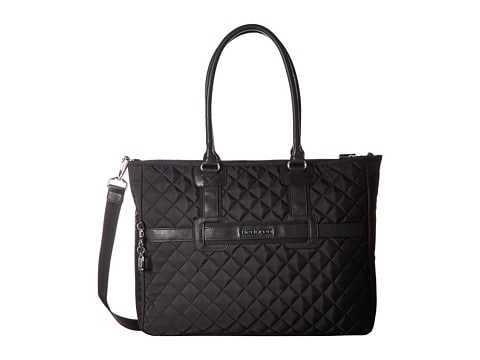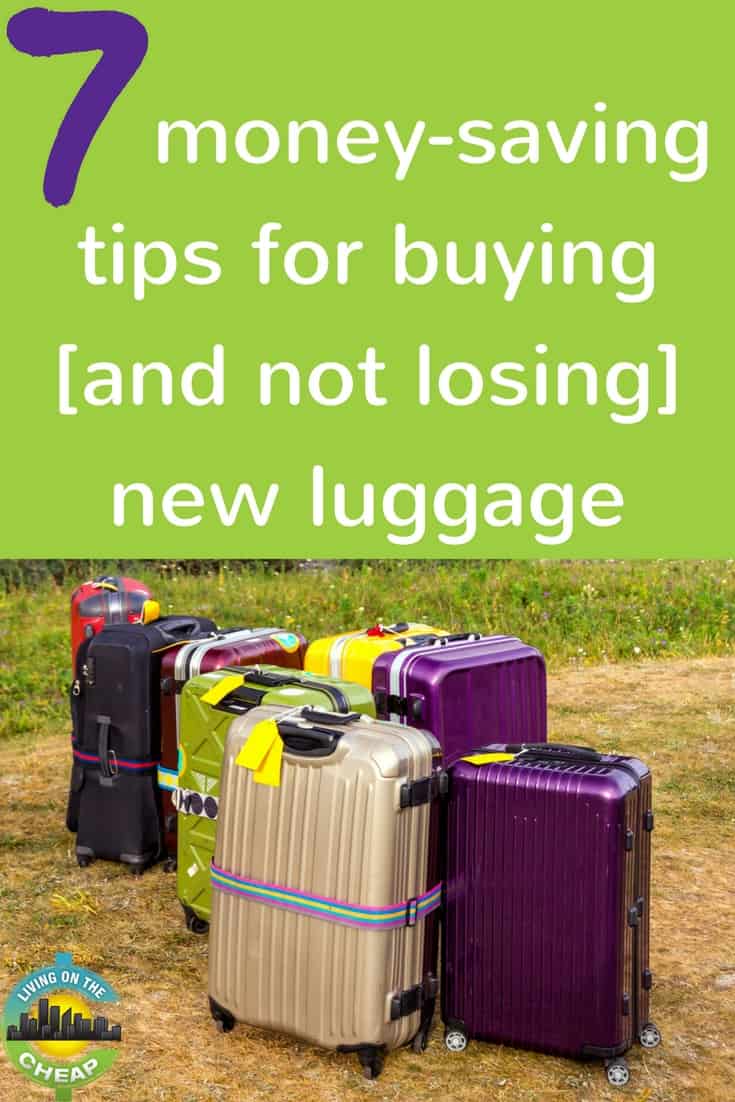Summer means travel. Living On The Cheap is all about saving readers money and that includes travel. I’m a bit of a suitcase addict — you should see my basement — and every year attend to the Travel Goods Showcase to see what’s new.

It’s all about FUNCTION, SAFETY, SIZE, and WEIGHT — and avoiding pesky checked bag fees or overweight luggage fees. Don’t worry, the examples below are all reasonably priced, most less than $150 and some even cheaper. You can find it all online or at local retailers. And it’s okay to get cheaper vs. fancy luggage, as long as you realize that you may have to replace it after a few trips. Here are seven tips that can help you save money when buying new luggage and making sure it doesn’t disappear on your travels.
Are locks worth it? Even if you don’t put anything of great value into checked luggage, it should be locked. Newer suitcases have locks built in. If you have an older case, you’ll need to buy a TSA-approved lock. What that means is TSA has a “master key” agents can use to open your lock should your luggage contents warrant extra scrutiny. But be warned: once you check that bag, sometimes bad guys are now using bolt cutters to cut them off.
Hardside v. softside? Polycarbonate suitcases are lighter, much lighter. For instance, the Lojel Ultra Lightweight weighs less than four pounds. That’s half the weight of my go-to ballistic nylon suitcase. On the downside unlike cloth, polycarbonate isn’t easy to attach pockets on the inside or outside, because there’s nothing for manufacturers to sew on to. And the thinner the plastic shell, the more likely your suitcase is to get scratched and nicked.
But manufacturers are making hardsides more durable and adding safety features. The Hedgren Transit Boarding S not only has a sturdier scratch-resistant polycarbonate shell, but an outside pocket that holds a 15″ laptop. Even better it has a built-in TSA lock that makes it almost impossible for the bad guys to break into.

Not only is the Hedgren S Transit lightweight and durable, but it has built-in TSA locks and an outside pocket for storing a laptop.
And like almost all suitcases these days it has the spinner wheels so you can turn your bag sideways and roll it down narrow aisles and just easier to maneuver.
Must check a bag? Make sure your suitcase has the built-in TSA-approved lock (especially if they expand the ban on carrying laptops and/or tablets onto the aircraft). This Lojel Hatch Large Spinner opens like a hatch instead of the typical clamshell found in most hardside bags. Also ensure that the shell is sturdy in case it ends up on the bottom of the pile. And you are going to want that new built in lock, especially they expand the ban on carrying computers and tablets onto aircraft.

Lojel’s “hatch” top makes it easy to open and pack, as compared to most hardside clamshell styles.

The Lojel Hatch 26″ Large suitcase. It’s incredibly light for its size.
Beat the ultra-low cost carriers at their own game. No matter the airline even ultra-low cost carriers like Frontier or Spirit allow you to carry one personal item such as a purse or backpack that will go under the seat in front of you. Consider a case like the Lite Gear Rolling Mobile Pro which fits under the seat of almost any airline and has a gazillion pockets.

It looks like a backpack and fits under an airplane seat. This Lite Gear Rolling Mobile Pro works as your “personal” item that then turns into rolling luggage with wheels and handle.
You carry the bag onto the plane like a backpack, but what the airline doesn’t know is that it has wheels and a hidden handle that turn it into a rolling suitcase. I haven’t seen anything like it on the market.
Let a bag do double duty. For that personal item women may want to pack a small purse, but use a travel tote, like this one from Hedgren, which slips over the handles of your suitcase but you can also stylish enough to carry around your destination.

Hedgren’s Andreia tote does double-duty as a travel bag and stylish purse.
A cheap way to spot your suitcase. The fancy suitcases with bright patterns may look pretty and easy to spot, but you pay for those designs. Instead, find the case that works for you and buy Duck Tape or Packing Tape which now comes in dozens of bright patterns. Heck, I use hockey stick tape with Canadian flags for which I paid $6 for 3 rolls. Just stick the tape in various spots on your suitcase and you’ll know yours when you see it.
Leave the measuring tape at home. Don’t worry about measurements like 20” vs. 21” vs. 25” which makes your head spin. Most travel goods manufacturers now “size” luggage by International, Domestic, Medium and Large. International means it first in the overhead of most airplanes worldwide. Domestic means overhead of most U.S. carriers. Medium and Large mean you have to check it.
Do you have any tips on buying or securing your luggage? Feel free to comment below.
If you liked this article, you may also enjoy:
Travel healthy and save on medical costs
Money saving travel tips for spring and summer
6 free and cheap travel gear essentials

